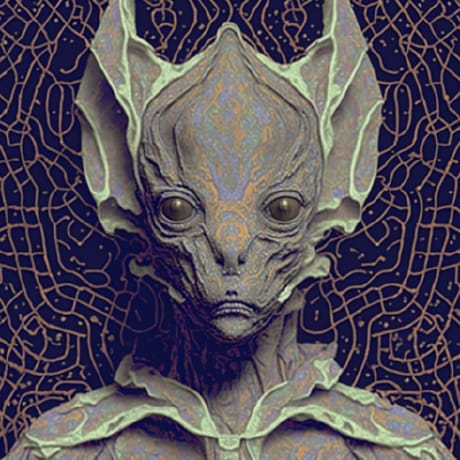Search

scientificCyanHarrier
@stevekrouse
Simple SQLite dashboard made by townie in this video: https://x.com/stevekrouse/status/1833577807093371325
HTTP
/** @jsxImportSource https://esm.sh/react */
import React, { useEffect, useState } from "https://esm.sh/react";
import { createRoot } from "https://esm.sh/react-dom/client";
<div className="sidebar">
function client() {
client();
.sidebar {
.sidebar h2 {
.sidebar ul {
.sidebar li {

bulletinBoard
@roramigator
// This app creates a community bulletin board where users can post messages with titles and view all posts.
HTTP
// Posts are automatically deleted after 24 hours. A basic spam filter is implemented to prevent abuse.
// The app uses SQLite for data storage and includes both server-side and client-side components.
/** @jsxImportSource https://esm.sh/react */
import React, { useEffect, useState } from "https://esm.sh/react";
import { createRoot } from "https://esm.sh/react-dom/client";
function App() {
</div>
function client() {
createRoot(document.getElementById("root")).render(<App />);
if (typeof document !== "undefined") { client(); }
async function server(request: Request): Promise<Response> {

leaderboardApp
@guillermodoghel
@jsxImportSource https://esm.sh/react
HTTP
/** @jsxImportSource https://esm.sh/react */
import React, { useEffect, useRef, useState } from "https://esm.sh/react";
import { createRoot } from "https://esm.sh/react-dom/client";
function App() {
</ul>
<button onClick={handleGoBack}>Reconsider Bid 🔄</button>
</div>
function client() {
createRoot(document.getElementById("root")).render(<App />);
if (typeof document !== "undefined") { client(); }
async function server(request: Request): Promise<Response> {

ForestryFinancialModel
@jbwinters
// Interactive forestry financial model simulator.
HTTP
// Interactive forestry financial model simulator.
// It will use React for the UI, recharts for data visualization, and custom slider components.
// The server will render the initial HTML, and the client-side JavaScript will handle the interactivity.
/** @jsxImportSource https://esm.sh/react */
import React, { useState } from "https://esm.sh/react";
import { createRoot } from "https://esm.sh/react-dom/client";
import { LineChart, Line, XAxis, YAxis, CartesianGrid, Tooltip, Legend, ResponsiveContainer } from "https://esm.sh/recharts";
<CartesianGrid strokeDasharray="3 3" />
<XAxis dataKey="year" label={{ value: 'Year', position: 'insideBottom', offset: -5 }} />
<YAxis label={{ value: 'Amount ($)', angle: -90, position: 'insideLeft' }} />
<Tooltip />
</div>
function client() {
createRoot(document.getElementById("root")).render(<App />);
if (typeof document !== "undefined") {
client();
export default async function server(request: Request): Promise<Response> {

egoBooster
@stevekrouse
* This ego booster app takes a selfie, sends it to GPT-4o-mini for analysis,
* and streams funny, specific compliments about the user's appearance.
* We use the WebRTC API for camera access, the OpenAI API for image analysis,
* and server-sent events for real-time streaming of compliments.
HTTP
* and server-sent events for real-time streaming of compliments.
/** @jsxImportSource https://esm.sh/react */
import React, { useState, useEffect, useRef } from "https://esm.sh/react";
import { createRoot } from "https://esm.sh/react-dom/client";
import { marked } from "https://esm.sh/marked";
</div>
function client() {
console.log("Client-side rendering started");
createRoot(document.getElementById("root")!).render(<App />);
if (typeof document !== "undefined") {
console.log("Document is defined, calling client()");
client();
} else {
console.log("Document is undefined, not calling client()");
async function server(request: Request): Promise<Response> {

zhangxiaoke
@webup
// This approach will create a personal card using React and Lucide React icons.
HTTP
// This approach will create a personal card using React and Lucide React icons.
// We'll use ESM imports for React and Lucide icons.
/** @jsxImportSource https://esm.sh/react */
import React from "https://esm.sh/react";
import { createRoot } from "https://esm.sh/react-dom/client";
import { FileText, Trophy, Briefcase, Palette, Book, MessageCircle } from "https://esm.sh/lucide-react";
<ul className="text-sm text-gray-600 list-disc list-inside">
// client-side only code
function client() {
if (typeof document !== "undefined") { client(); }

sqliteAdminDashboard
@stevekrouse
Simple SQLite dashboard made by townie in this video: https://x.com/stevekrouse/status/1833577807093371325
HTTP
// This val creates a SQLite dashboard admin panel with a sidebar for table names
// It uses React for the frontend and the Val Town SQLite API for database operations
/** @jsxImportSource https://esm.sh/react */
import React, { useEffect, useState } from "https://esm.sh/react";
import { createRoot } from "https://esm.sh/react-dom/client";
<div className="sidebar">
function client() {
client();
.sidebar {
.sidebar h2 {

shorturl
@cocodrilette
🔗 Short URL Generator A simple, serverless short URL generator built on Val Town using React and SQLite. Features 🌐 Generate short URLs for any long URL 💾 Persistent storage using SQLite 🚀 Instant redirection 🎨 Clean, minimal React interface How It Works Enter a long URL in the input field Click "Generate Short URL" Receive a unique, short URL Share and use the short URL, which will redirect to the original link Technical Details Built with React (client-side) Uses Val Town's SQLite for URL mapping storage Generates a random 5-character short code Serverless deployment on Val Town Example Long URL: `https://very-long-url.com/with-many-parameters`
Short URL: `https://your-val-domain.web.val.run/ab123` Limitations Short codes are randomly generated (potential for rare collisions) No custom short code option URLs are stored indefinitely Source [View Source](${import.meta.url.replace("esm.town", "val.town")})
HTTP
# 🔗 Short URL Generator
A simple, serverless short URL generator built on Val Town using React and SQLite.
## Features
- 🚀 Instant redirection
- 🎨 Clean, minimal React interface
## How It Works
## Technical Details
- Built with React (client-side)
- Uses Val Town's SQLite for URL mapping storage
/** @jsxImportSource https://esm.sh/react@18.2.0 */
import React, { useState, useRef } from "https://esm.sh/react@18.2.0";
import { createRoot } from "https://esm.sh/react-dom@18.2.0/client";
function generateShortCode(length = 5) {
</div>
function client() {
createRoot(document.getElementById("root")).render(<App />);
if (typeof document !== "undefined") { client(); }
export default async function server(request: Request): Promise<Response> {

techstackinventory
@ejfox
* This val creates a tech stack inventory chooser using React and Tailwind CSS for styling.
* It allows users to select technologies for different categories and displays the chosen stack.
HTTP
* This val creates a tech stack inventory chooser using React and Tailwind CSS for styling.
* It allows users to select technologies for different categories and displays the chosen stack.
/** @jsxImportSource https://esm.sh/react */
import React, { useState } from "https://esm.sh/react";
import { createRoot } from "https://esm.sh/react-dom/client";
const techCategories = {
frontend: ["React", "Vue", "Angular", "Svelte"],
backend: ["Node.js", "Python", "Ruby", "Java"],
<h2 className="text-xl font-semibold mb-2 text-gray-800">Your Chosen Stack:</h2>
<ul className="list-disc list-inside">
{Object.entries(selectedTech).map(([category, tech]) => (
</div>
function client() {
createRoot(document.getElementById("root")).render(<App />);
if (typeof document !== "undefined") { client(); }
async function server(request: Request): Promise<Response> {

pythonLearningApp
@mrshorts
@jsxImportSource https://esm.sh/react@18.2.0
HTTP
/** @jsxImportSource https://esm.sh/react@18.2.0 */
import React, { useState } from "https://esm.sh/react@18.2.0";
import { createRoot } from "https://esm.sh/react-dom@18.2.0/client";
function PythonLearningApp() {
textDecoration: 'none'
function client() {
createRoot(document.getElementById("root")).render(<PythonLearningApp />);
if (typeof document !== "undefined") { client(); }
export default async function server(request: Request): Promise<Response> {
} catch (error) {
console.error('Server-side error:', error);
return new Response(JSON.stringify({

randoDisc
@ashryanio
@jsxImportSource https://esm.sh/react@18.2.0
HTTP
/** @jsxImportSource https://esm.sh/react@18.2.0 */
import { AnimatePresence, motion } from "https://esm.sh/framer-motion?deps=react@18.2.0,react-dom@18.2.0";
import { createRoot } from "https://esm.sh/react-dom@18.2.0/client";
import React, { useCallback, useEffect, useRef, useState } from "https://esm.sh/react@18.2.0";
function ErrorMessage({ message }) {
<div className="relative flex items-start w-full max-w-lg justify-center">
{/* Navigation buttons outside AnimatePresence */}
{backHistory.length > 0 && (
</div>
class ErrorBoundary extends React.Component {
constructor(props) {
</div>
function client() {
const rootElement = document.getElementById("root");
</ErrorBoundary>,
// Ensure client() runs after the DOM is fully loaded
if (typeof document !== "undefined") {
document.addEventListener("DOMContentLoaded", client);
export default async function server(request: Request): Promise<Response> {

dateme_router_hydrated
@stevekrouse
@jsxImportSource https://esm.sh/react@18.2.0
Script
/** @jsxImportSource https://esm.sh/react@18.2.0 */
import * as ReactDOM from "https://esm.sh/react-dom@18.2.0/client";
} from "https://esm.sh/react-router-dom@6.23.0?deps=react@18.2.0,react-dom@18.2.0";
import * as React from "https://esm.sh/react@18.2.0";
function makeClientSide(routes) {
children: route.children ? makeClientSide(route.children) : undefined,
const router = createBrowserRouter(makeClientSide(routes), {
ReactDOM.hydrateRoot(
<React.StrictMode>
</React.StrictMode>,

react_example
@pomdtr
* @title Running React on the Client
* @description Vals can also be used to host client-side code!
* @preview https://pomdtr-react_example_server.web.val.run
* @include pomdtr/react_example_client
* @resource [React - Quick Start](https://react.dev/learn)
HTTP
* @title Running React on the Client
* @description Vals can also be used to host client-side code!
* @preview https://pomdtr-react_example_server.web.val.run
* @include pomdtr/react_example_client
* @resource [React - Quick Start](https://react.dev/learn)
// The server response includes a script referencing the client val
export const server = (req) =>
<head>
<title>React Example</title>
<meta name="viewport" content="width=device-width, initial-scale=1" />
<main id="root"></main>
<script type="module" src="https://esm.town/v/pomdtr/react_example_client"></script/>
</body>

homepage
@csl_
Got a domain for vals; needs a homepage; minimal effort
HTTP
* The front of the card displays Carl's name and an animated subheading, while the back shows a humorous message and links.
/** @jsxImportSource https://esm.sh/react */
import React, { useEffect, useState } from "https://esm.sh/react";
import { createRoot } from "https://esm.sh/react-dom/client";
function App() {
"hey, this isn't a bouldering gym!",
"should be outside",
"an AI wrote these",
</div>
function client() {
createRoot(document.getElementById("root")).render(<App />);
if (typeof document !== "undefined") { client(); }
async function server(request: Request): Promise<Response> {

domainSanta
@karkowg
domainSanta Send your domain wishes to Domain Santa! 🌐🎅
https://domainsanta.christmas/
HTTP
/** @jsxImportSource https://esm.sh/react */
import React, { useEffect, useState } from "https://esm.sh/react";
import { createRoot } from "https://esm.sh/react-dom/client";
import { letterVariations } from "https://esm.town/v/karkowg/domainSantaLetterVariations";
<a
href="https://sideprojectpodcast.com/episodes/linear-poker-with-chris-morrell/transcript#t=54m56s"
className="text-blue-600 hover:underline"
</div>
function client() {
createRoot(document.getElementById("root")).render(<App />);
if (typeof document !== "undefined") {
client();
export default async function server(request: Request): Promise<Response> {